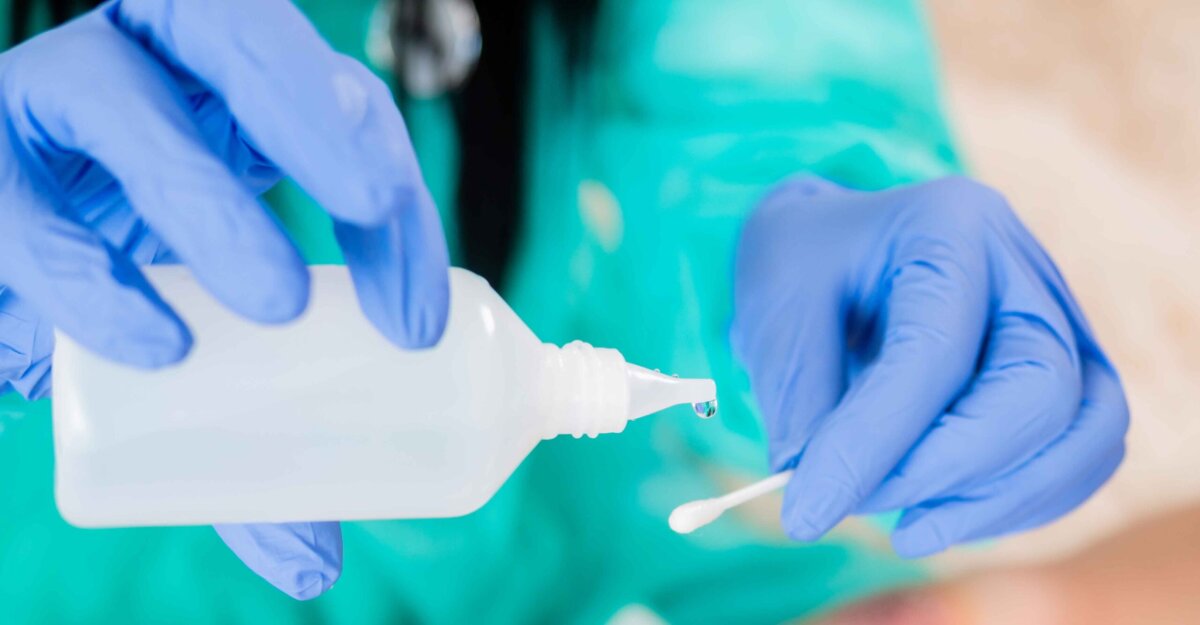As a common household item, hydrogen peroxide has many beneficial uses. But in wound care, it can create complications — especially during healing.
Hydrogen peroxide is a mild antiseptic solution first produced in 1818 by French chemist, Louis Jacques Thenard. Hydrogen peroxide works by releasing oxygen, which causes a foaming action.
This oxidative action helps to cleanse a wounded area as well as remove dead skin cells. This solution occurs naturally in small amounts and is formed when atmospheric oxygen reacts with water.
Over time, hydrogen peroxide has become a useful product in our day-to-day lives. But understanding its overall effects on wounds is essential in providing effective treatment.
General uses
The chemical compound for this solution is H2O2. It is a colorless liquid with a bitter taste and has a variety of uses in both low and high strengths.
According to the National Institute for Occupational Safety and Health, low concentrations of household peroxide have been used as bleach for hair and clothing and as a household disinfectant. In high industrial concentrations, it is used as a textile and paper bleach, for the production of rubber products, and as a component of rocket fuel.
In some instances, low concentrations of hydrogen peroxide have been used for wound cleansing and as an oral rinse for minor mouth irritations. It has been part of household first aid kits for decades.
The problem with hydrogen peroxide on wounds
Although it has long been a household staple, modern wound care has moved away from the use of hydrogen peroxide as a wound cleanser. Its effectiveness at destroying cells is not specific to bacteria alone and can be harmful to healthy tissue and normal cells.
This effect on healthy tissues can delay wound healing. While research is ongoing on the use of hydrogen peroxide on immune-regulating function in chronic wound healing, most wound care clinicians have moved away from the use of hydrogen peroxide on wounds as a conventional treatment method. This includes avoiding use of it in the home setting.
As wounds progress from the hemostasis and inflammatory phases into the proliferative phase of healing, the use of products that damage developing tissue will only serve to delay or even stagnate the wound you’re trying to heal. And a prolonged open wound is at a higher risk for developing an infection.
An infection can be especially detrimental to patients who are older, diabetic, very young, and immunologically compromised. The use of hydrogen peroxide on a wound when it initially occurs can damage surrounding healthy tissue. Although this is not as disruptive as ongoing, long-term use of the solution, using hydrogen peroxide on wounds at the time of an injury does not give the best start in the healing journey.
Alternatives to hydrogen peroxide
Today’s wound treatment facilities typically choose wound irrigation tools, normal saline, or a surfactant wound cleanser for routine cleansing of acute and chronic wounds. More advanced treatment may include a non-cytotoxic hypochlorous solution due to its antimicrobial benefit. Any of these products will gently cleanse the wound and prevent harm without harming established or developing healthy tissues within the wound and the periwound area.
When it comes to at-home wound treatment, the use of potable water and mild soap is acceptable and encouraged. Some tips for wound first aid at home include:
- Wash hands with soap and water before beginning wound care.
- Stop any bleeding by applying light pressure using a clean dressing or cloth.
- Clean the wounded area and surrounding skin with a mild soap and water. Then pat the area dry.
- Apply a small amount of antibiotic ointment to the open area. Then cover it with a clean, dry dressing.
- Keep the dressing clean and dry. Change the dressing daily and as needed for drainage.
- Monitor the wound and surrounding skin for signs of infection and see a healthcare provider if the wound develops redness, warmth, swelling, drainage, odor, or if a fever develops.
- Patients who are diabetic, older adults, very young, and/or immunocompromised should see a medical professional for any new wounds. Additionally, if the wound covers a large area of the body or is on the face or genital region, it is also recommended to see a healthcare professional.
For those of us who grew up with that dark brown bottle of hydrogen peroxide under our bathroom sinks, it can seem unnatural to refrain from using it on an acute wound.
However, we now know we never truly needed it. We should have used that solution to scrub our bathroom fixtures instead.
If you're interested in expanding your knowledge of wound care, networking with colleagues, or seeing the latest wound care products and technology, register for the Wild on Wounds (WOW) conference August 14–17 in Phoenix, Arizona.
Register NowWhat do you think?

